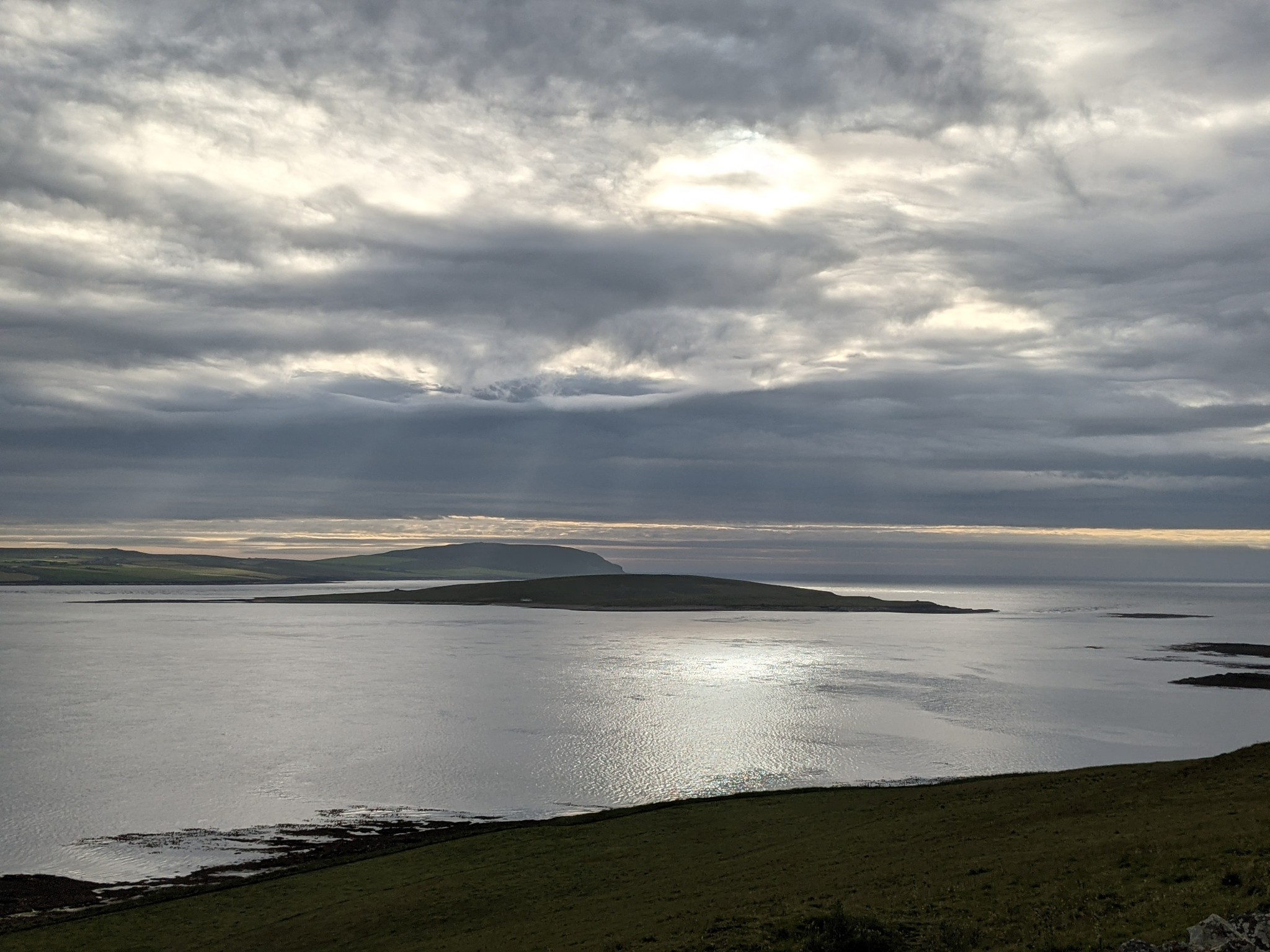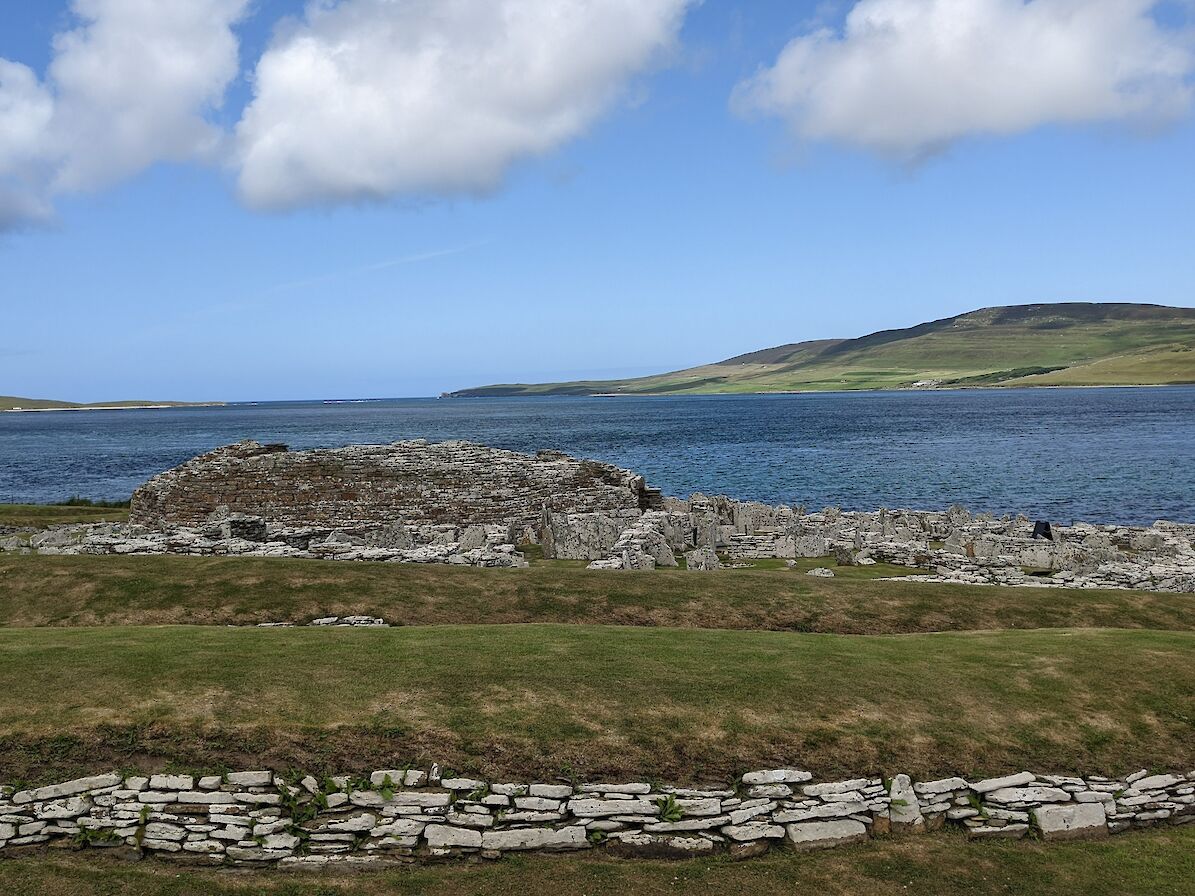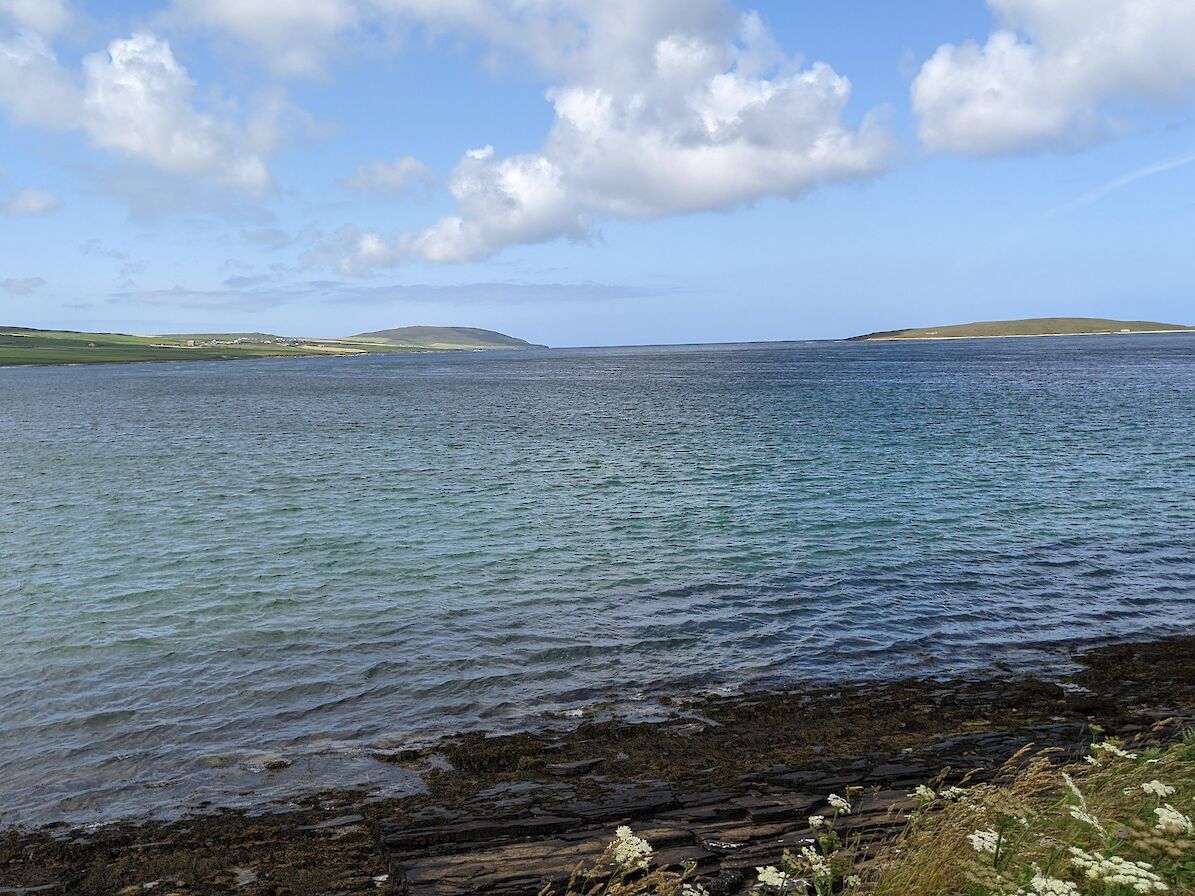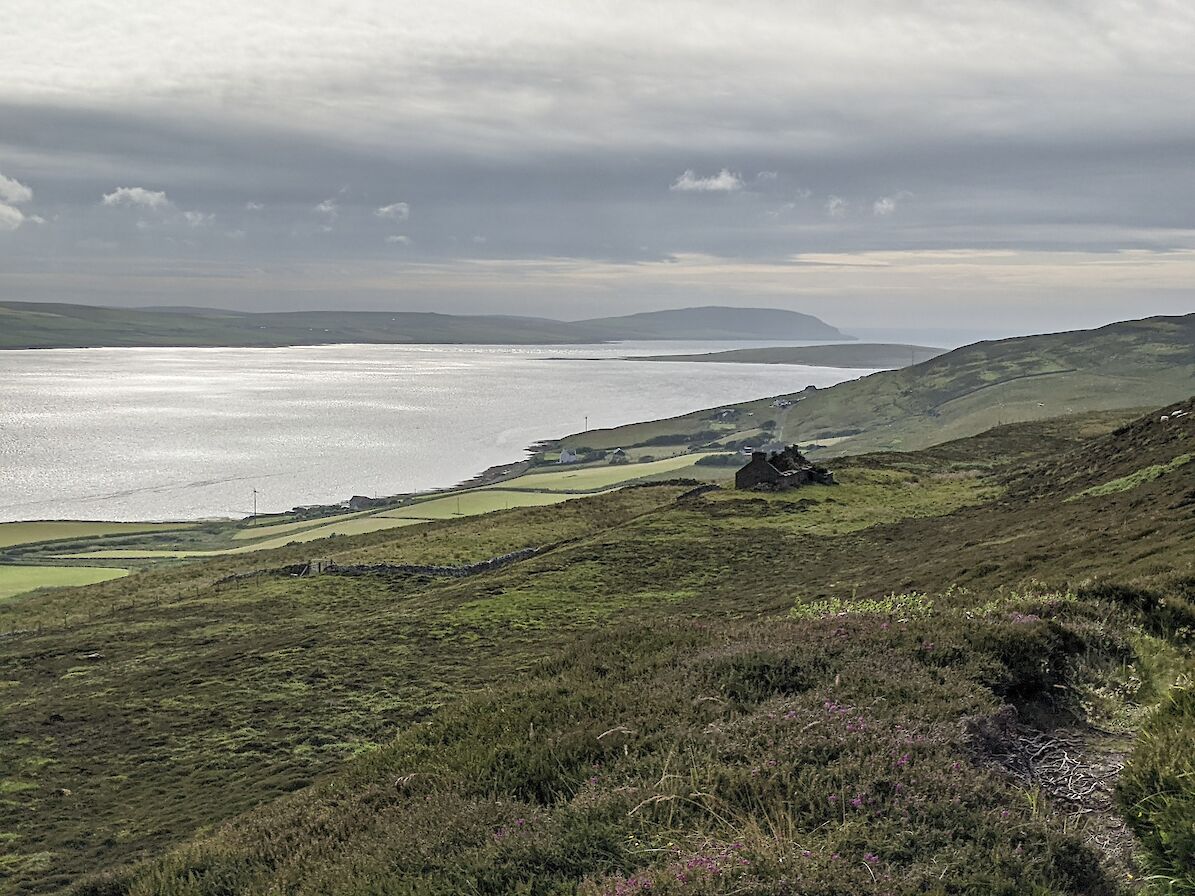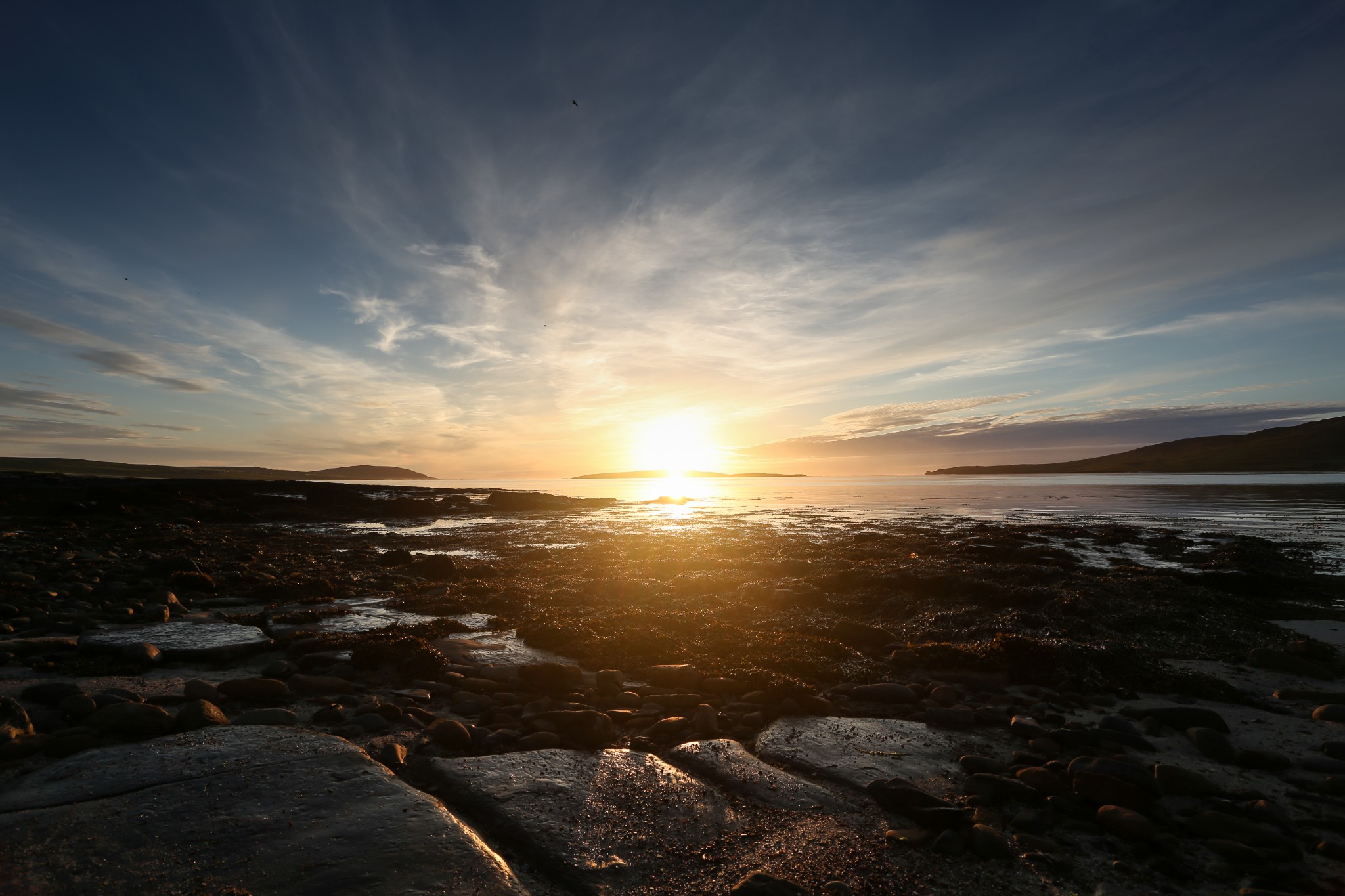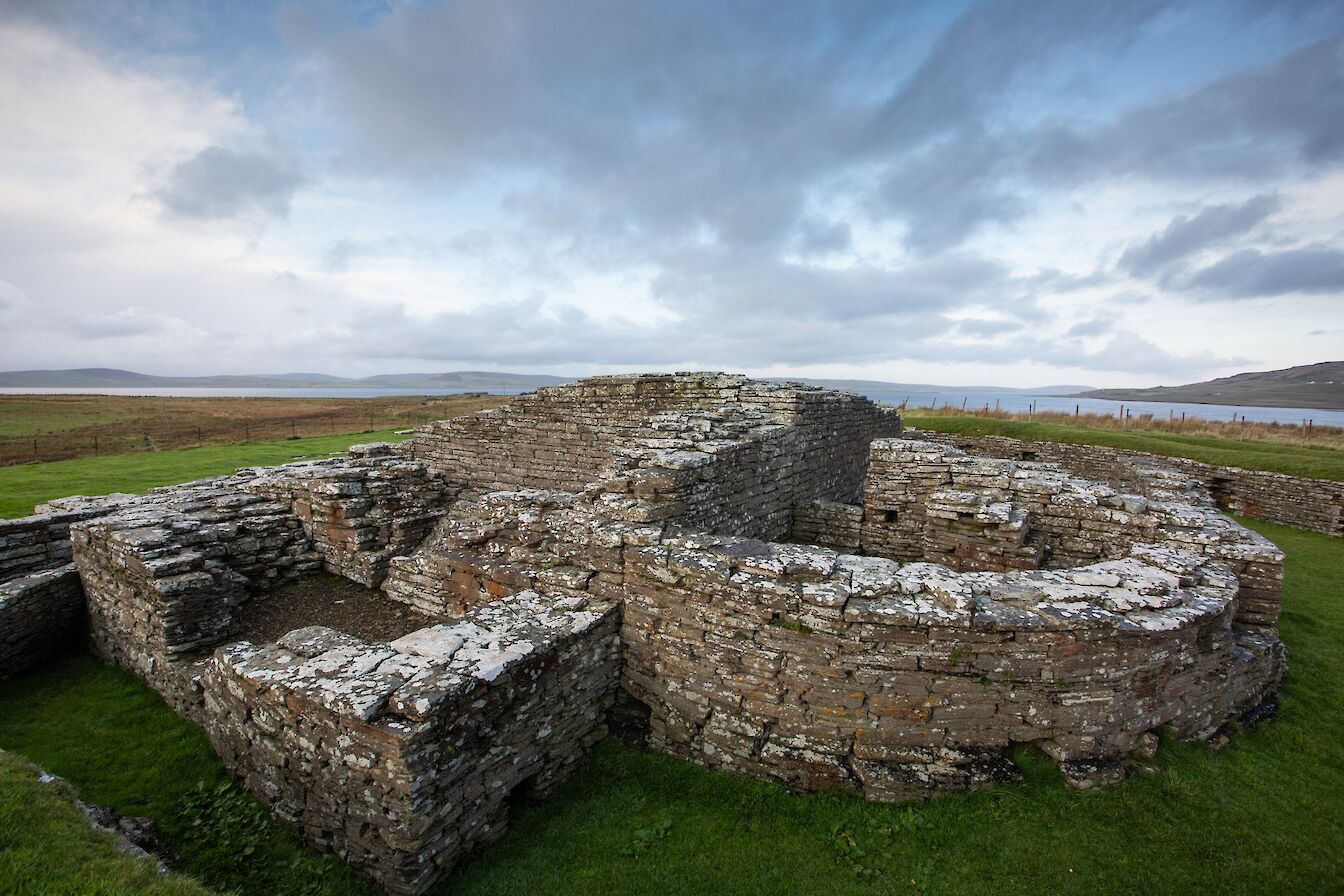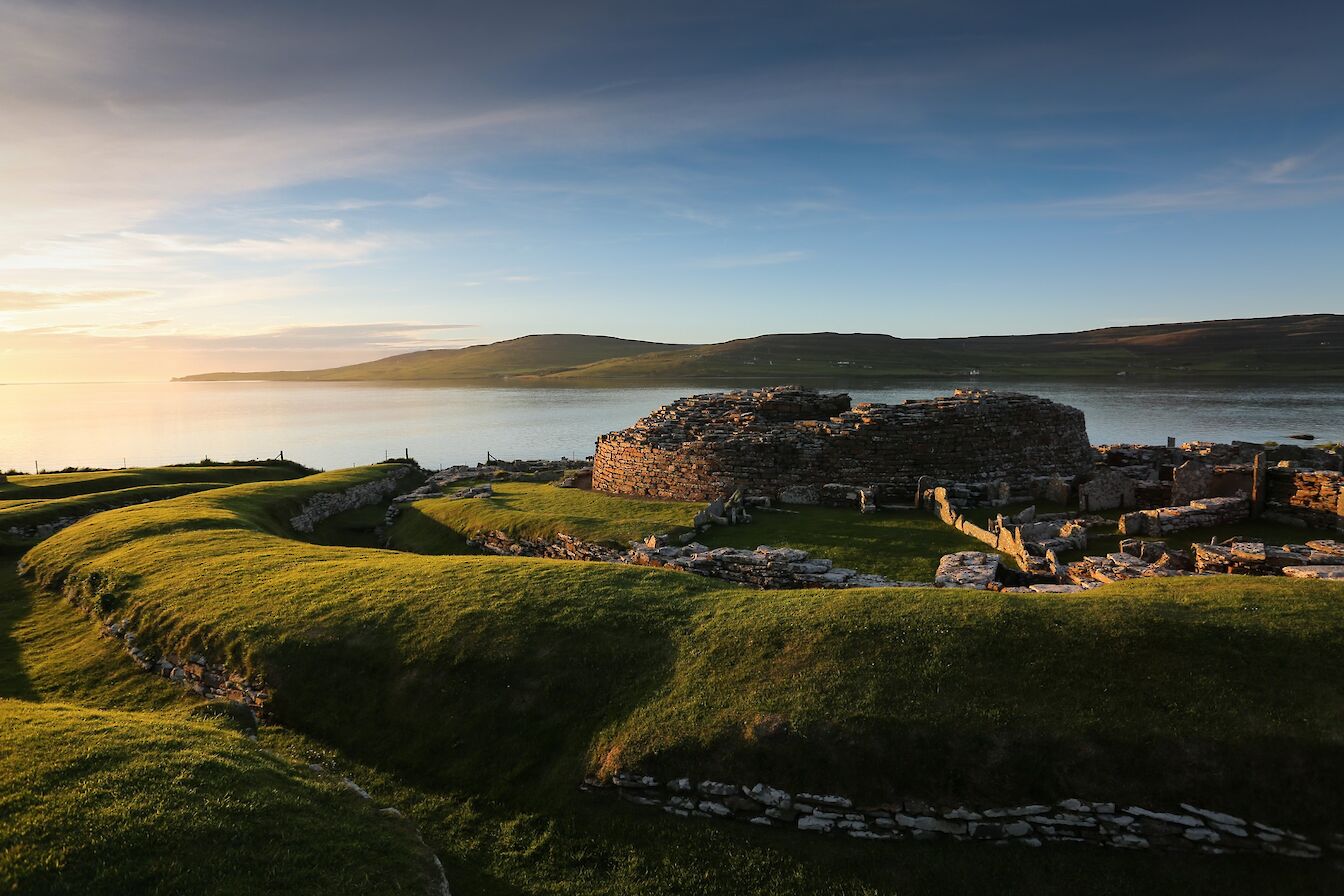Eynhallow Sound separates the Orkney Mainland from Rousay with some of the fiercest tides and strongest folkloric traditions in Orkney.
Home to an underwater kingdom, a vanishing island, battle-ready fairy folk and a Norse giant, this turbulent stretch of water is a gift to history-seekers and storytellers alike.
These are but a few of its otherworldly wonders.
Eynhallow: Isle of Mystery
The isle of Eynhallow is the shrouded pupil in the pulsing eye of the Eynhallow Sound. Here the tides can rush up to eight knots, faster than the cruising speed of a dolphin. When the ebb-tide rushing west is met by strong winds it creates a ledge-like cacophony of waves at the western mouth of the Sound. Even modern fishermen in engine-powered boats speak of this phenomenon with awe. The Orkney Book, written by John Gunn in 1909, recounts a popular rhyme:
Eynhallow frank, Eynhallow free,
Eynhallow stands in the middle of the sea;
With a roaring roost on every side,
Eynhallow stands in the middle of the tide.
Eynhallow is a ‘vanishing island’, frequently rendered invisible from the shores of the Mainland and Rousay by thick sea mist. In legend, it is invisible altogether to mortal eyes, especially those actively seeking it. The effect is especially strong in winter, when the hazy, low-hanging sun conspires with the shortness of the days to conceal even those things near to the shore. This veiling left ample room for mystery in the minds of those who lived near, and indeed on, Eynhallow.
Writing in the mid-19th century, Walter Traill Dennison vividly recalled how, “On a calm frosty day huge masses of cloud may be seen hanging over the sea in every imaginable form, with here and there an opening like a curtain partly flung back, showing weird vistas that seem to lead into a world unknown.” One of these weird worlds was Hildaland, the kingdom of Finn Folk, which Eynhallow served as a kind of portal into. In Traill’s time, Hildaland meant ‘hidden land’ to the older folk, and ‘enchanted land’ to the young – the former retaining something sinister, lost to the innocence of those for whom such tales were increasingly seen as superstitions rather than mirror realms to our own.
In Rousay, it was common knowledge that if any person wished to seek out Eynhallow they should hold steel in their hand and never once look away from the island from the moment they spot it. No object of steel or iron, icons of the industry of humanity, would remain in Eynhallow’s soils after sunset. They would, of their own accord, leap from the ground.
Neither could animals brought from other shores survive on Eynhallow. Writing in 1884, James Fea insisted that any time a cat was brought ashore it would die of convulsions within minutes. Rats and mice, on being let loose, would run into the sea and attempt the oft-fatal swim across the Sound rather than stay. Such was the deterring power of Eynhallow’s soils that it was common practice in nearby islands to place handfuls of it soil under the foundation of new houses and farmyard corn-stacks, for no rodent could pass through it. By the early 20th century the spell seems to have been broken - a Mr. Wood of Midhouse, Costa, had lease of the island for sheep grazing and also introduced rabbits, which not only survived but thrived to the point of infestation.
Eynhallow was inhabited until 1851, when a malignant fever broke out among the resident crofter families. The landlord, David Balfour – the same man who had Balfour Castle built in Shapinsay – evicted the survivors. During this process, it was discovered that some of the islanders had made their home among the ruins of the old chapel mentioned in Orkneyinga Saga once used by Norse, Scots, and English monks.
The Finn Men
Who were these Finn Men who called the waters of the Eynhallow Sound home? They are not so monstrous as their name implies. Highly intelligent, they were amphibious rather than purely aquatic, though the sea was their preferred domain and the place where their powers were fully realised. They looked enough like humans to deceive the eyes of any people watching them, even wearing clothes while rowing in their small boats. Like many wealthy people today, they had both summer and winter homes – Hildaland, what we call Eynhallow, was their summer home, while the underwater kingdom of Finfolkaheem was their winter home and permanent base if things above the surface went awry.
For all that, their magic was plain to see. Their boats never flew sails, and a Finn Man could row alone from Orkney to Norway or Iceland with just seven mighty strokes of the oar. Every Finn Man was deeply versed in, and indeed inseparable from, magic. Some stories insist that the action of rowing was a pretence, and that a Finn Man’s boat was in fact propelled by magic alone.
There were also Finn Wives who, like accused witches on land, were masters in curing diseases through mysterious rituals and herb-lore. While Finn Men assiduously avoided direct interactions with humans, Finn Wives often married them. They appeared as beautiful mermaids while young, but would transform into much less flattering Finn Wives the very day they were wed. Finn Wives often took up knitting and begging, losing themselves in the cruel world of humanity and giving rise to tales of children born with webbed hands and unnatural gifts.
For all their magic, Finn Men were not above mischief. Traill recounts their tendency to seize the end of a fisherman’s line, especially one trespassing in waters belonging to the Finn Men, and hold on until the line broke. They would also carve holes in fishing boats during the night, or unmoor them and allow them to drift into the deep. Fishermen could protect themselves against such antics by carving a cross on their sinker and drawing one in chalk on their boat, which no Finn Man could come within half a mile of without retching in pain.
In a more prosaic twist, several sources theorise that the Finn Men were not magical beings at all, but humans from the far north of Norway, Finland, and Greenland whose canoes were taken by ocean tides into distant waters. Some nineteenth century witnesses of Finn Men noted their hide coats, unknown language, and very human need for shelter and food. Elements of Finn Men’s outfits were collected by antiquarians and put into ethnological displays. While there is no doubt truth in the idea of the rare boatman being lost far from home, the stories of strange happenings in the Eynhallow Sound are far too numerous, ancient, and sincerely held to be accounted for by anything so straightforward.
Eynhallow’s magical neighbours
Inhabiting the islands alongside the sea-realm of the Finn Men were other beings of legend. Once such figure was Kolbein Hruga, or ‘Cubbie Roo’. A real historical person previously discussed in my account of using the Orkneyinga Saga as a guide to Orkney, Cubbie Roo’s most lasting monument is his eponymous stone castle in Wyre. A man of great size and will, it only took a few centuries for him to become a cross between giant and bogeyman in the minds of those living along the Sound. His name was used to frighten children into good behaviour well into the twentieth century, with parents threatening, “Cubbie Roo’ll get thee!”
Far more numerous were the fairy folk, a magical and diminutive people who were driven out of Orkney by the arrival of humans. Ancient ruins, such as the Broch of Gurness in Mainland and the many cairns of Westness, Rousay, are said to be their handiwork, their sunken doorways and seemingly subterranean layout taken as evidence of the fairy folk’s unusual yet familiar way of life. They almost always wore elaborate blue outfits, hosted dances and gatherings, and could be seen frolicking in otherwise lonely places – try to get too close, though, and they would vanish into the hills and barrow-mounds they called home.
One story, recounted by Hugh Marwick in the Third Statistical Account of Scotland, paints a defiant picture: when the first Norse ship prowled near Rousay, the fairy folk assembled on the hillside above Trumland with spears glittering like cornstalks in the morning light. The daunted Norsemen sailed onward in search of easier pickings, though it would not be long before the fairy folk were driven from Orkney altogether. Their last holdout was Hoy, where hidden recesses within deep glens held their secrets for longer than the rest.
